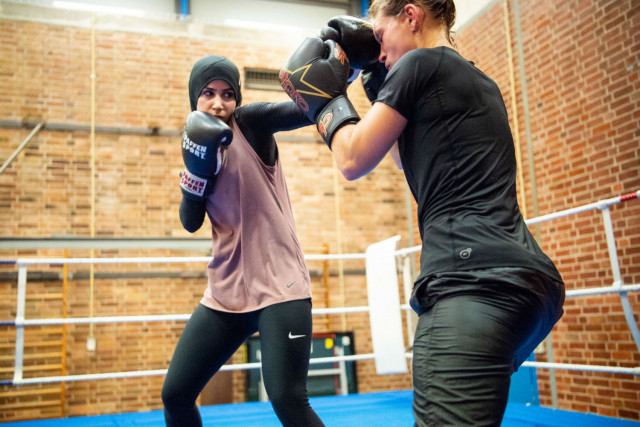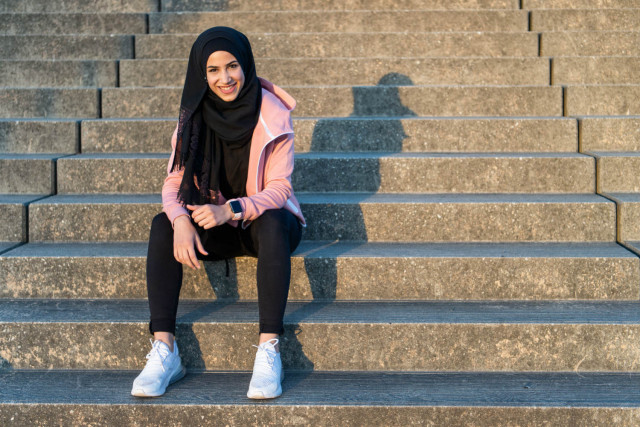Mawlayi first landed in Malmö in the early 1990s, his family hoping that settling in peaceful and prosperous Sweden would allow all them to put the violence that marked their past behind them.
“Life was easy and Sweden was a safe place for me to grow up,” explained Mawlayi, who was barely a teenager at the time.
“In Kabul, I was scared to go to the cinema or take the bus because there were bombs exploding everywhere. I didn’t go to school for the last few months because a couple of rockets hit Ghazi Adi school where I studied and it was closed,” he recalled.
After escaping from Afghanistan, Mawlayi’s family spent a couple of years at refugee camps in India before moving to Sweden. It was in Malmö that the teenage Mawlayi began to really develop his interest in martial arts, starting with taekwondo.
“I actually started training in 1993 but I had been fond of martial arts since I was a kid in Afghanistan,” he says.
Despite Mawlayi’s growing love for martial arts, he was initially unable to compete professionally in his adopted home country due to ban on boxing and similar sports dating back to 1970.
However, the law was revised in late 2006, paving the way for Mawlayi and others to pursue their dreams in rings around Sweden.
Ever since the law came into effect, MMA has grown in popularity in Sweden and there are now more than 50 clubs sanctioned by the Swedish MMA Association scattered across the country.
While Sweden may have been late to embrace MMA, that hasn’t stopped Mawlayi, whose nickname is “Natural Born Killer,” from emerging as an international MMA star.
The 31-year-old most recently made a splash at Martial Combat, a new MMA show in Singapore arranged by ESPN Star Sport, Asia’s primary sports broadcaster, when he won a Martial Combat Superfight in June – a fight broadcast in 24 Asian countries.
While MMA may look violent and risky from a spectators perspective, for Mawlayi, any actual risk involved in MMA pales in comparison with the sort of risks he faced daily growing up in Afghanistan. Explosions and gunfire were a part of everyday life and although Mawlayi left nearly Afghanistan two decades ago, the memories remain fresh.
“I remember everything from the war with the Russians,” he recalled. “There were bombs exploding almost every day and you could hear the gun shots everyday. You could also hear the long distance rockets firing from the mountains in to Kabul and you knew one could hit your house. I was born in war and you get used to it.”
Mawlayi’s journey out of Afghanistan began when the government at the time suspected his father, who was a doctor at Kabul University, of actively opposing the regime.
“My father ended up in jail couple of times and we knew our lives were in danger if we did not leave the country,” said Mawlayi.
Even after having resettled in Sweden, Mawlayi remained preoccupied with fighting.
“I don’t know why I have this fascination with fighting,” he explained. “Perhaps it has something to do with my childhood, but I don’t have a complete answer. It just keeps me calm and gives me discipline in my life.”
For Mawlayi , the term “fighting” can cover anything from a real war in which people actually die to the closely controlled and comparatively safe environment of a sanctioned MMA fight. Whether as an unwilling spectator or an actual participant, Mawlayi has experienced both ends of this spectrum.
As a child, Mawlayi walked around knowing that he was utterly defenceless against stray Mujahideen rockets. As an MMA fighter, he has had time to develop the tools he needs to defend himself in the cage.
Mawlayi initial training in taekwondo led to a black belt in the discipline. He later traveled to Brazil to study grappling and submission wrestling, going on to become a highly decorated grappler, achieving a purple belt in Brazilian jiujitsu.
In 2005, Mawlayi had his first MMA fight, putting together a string of submission wins leading him to claim the title of Scandinavian shooto champion.
The success forced him to quit his job as a nurse at a Malmö hospital to travel to Thailand to teach and train martial arts at the Legacy Gym, a legendary MMA training facility specializing in muay thai, a traditional Thai martial art.
It was during this period that Mawlayi won the Martial Combat Superfight title, defeating American Muay Thai fighter Cyrus Washington early in the opening round. It was an eye catching performance which immediately brought him to the attention of the Asian media.
But while Mawlayi’s reputation in Asia is growing, he remains relatively unknown in Sweden.
“MMA is getting very popular in Sweden, but not many people know about me here because I’ve been fighting in international shows,” he said. “I feel I am kind of forgotten here in Sweden.”
While MMA is now legal in Sweden, there remains a legacy of suspicion stemming from the nearly three decade long boxing ban remains, says Mawlayi. As a result, MMA matches are conducted under different rules in Sweden.
“Elbows are not allowed on the ground and the referee will stop the fight very fast,” Mawlayi explained.
As a submission specialist, Mawlayi will look to put his opponent in a choke or hold, forcing them to submit or risk losing consciousness or sustaining a serious injury. Unlike either boxing or kickboxing, an MMA fight can go to the floor meaning a much wider array of techniques can be employed.
Serious injuries are extremely rare, but there is still a perception of brutality, partly because fights are traditionally held in a cage to allow the action to continue uninterrupted. This is one of the reasons Mawlayi has been forced to move overseas in order to continue his development as an MMA fighter.
However, after a couple of years in Thailand, Mawlayi is now back in Malmö, having come back to Sweden with his Thai fiancée after his victory at Martial Combat 4.
The couple has since married and is expecting their first child later this year. While fatherhood has forced the Natural Born Killer to take his fighting career more seriously, he has also had to make some major sacrifices.
“The prospect of becoming a father has given me even more discipline as well as responsibility,” he said. “In Thailand, I was a full-time fighter and living in the gym with all the other fighters. In Sweden, I am working a night shift as a translator for incoming Afghani and Somali kids in a refugee camp. I like to think I give hope to these war affected kids but I wish I could still be a full time fighter.”
While Mawlayi might not have the luxury of a full-time training camp, the impending birth of his son means he will not be short of motivation for this fight. After all, it was Mawlayi’s father who took his family out of Asia and eventually to Sweden so that his son could get away from the fighting.
Almost 20 years later, Mawlayi now finds himself with the prospect of needing to travel in the opposite direction so he can be closer to the competitive fighting that will help him achieve a better life for his own young family.





 Please whitelist us to continue reading.
Please whitelist us to continue reading.
Member comments